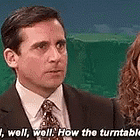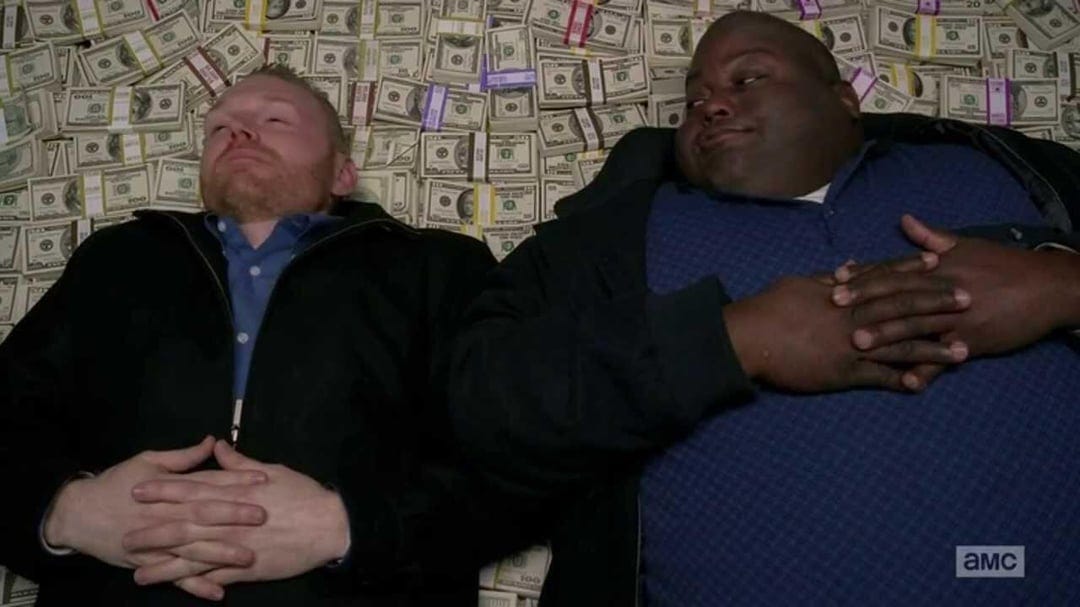“If interest rates go above 2% everyone will die!” Ben Bernanke angeringly slamming his fist into the table. “I’ve spent my entire adult life studying The Great Depression, when credit dried up faster than rain in the desert. Banks stopped lending, businesses stopped investing, the economy imploded on itself. This will happen again, unless we (inflate assets so people don’t realize the economy is misallocated)!
He might not have said exactly these words, but this is more or less what former chairman of the Federal Reserve Ben Bernanke insisted was the only viable path to address the impending financial crisis. The Bush and Obama administrations agreed, as did governments and central bankers worldwide. Pretty much every major country in response to the global downturn, slashed interest rates as low as they could, then tried to stimulate the economy with massive borrowing and spending.
Despite these aggressive actions, the global economic recovery was slow, prompting even more aggressive rate cutting, borrowing and money printing. Of course excessive money printing has on many occasions meaningfully impaired a countries economy, so governments didn’t do that. Besides, it’s only money printing when it comes from the Weimar region of France. What governments did instead was called quantitative easing, which is well…money printing.
What happened next, was the same thing that happened any time interest rates were held artificially low for extended stretches. Asset prices, government debt and inequality all rose, then a major correction appeared, and what did governments do? You guessed it.
If you’ve studied economics or followed the news for the last few decades, you probably think this is the necessary formula to save the economy when a recession hits: Cut interest rates, borrow/spend and keep pedal to the medal so long as markets climb and inflation is at 2%. What if this is wrong though?
Keep reading to find out why?
But first, make sure to hit the Subscribe button below to join the nearly 1,000 Subscribers that get articles like these, delivered directly to their inbox.
If this week’s article does not interest you, please check out some other recent ones:
Interest Rates & Inflation for Dummies
"Economists are people who are good with numbers but don't have the personality to be accountants. They know 1,000 ways to make love, but don't know any women."
Naseem Taleb
Before we get into a critique of economics, if you are unsure how monetary policy impacts the economy, when you hear interest rate, think of this as the price of time or the cost of borrowing. Would you lend somebody $100,000 for one minute or one year and expect the same return? Interest rates are the fees earned by lenders, paid by the borrower over a specified time period, generally noted as a yearly rate.
Think of a mortgage. A borrower takes out a multi-year loan, where in addition to the original principal, they pay interest. If the interest rate is low, the amount paid above the principal is small. The higher the borrowing cost, the more money goes towards paying off interest. This is why, all things being equal, low rates benefit borrowers, and high rates benefit lenders.
There are several risk factors that can influence borrowing cost (default risk, time horizon risk etc.), which is why each loan carries its own rate. In a universe with many opportunities, for a lender to accept a higher risk, they need a higher return. This is why high risk loans, are more expensive. If the richest person you knew and the town thief both asked to borrow $100,000, with the same conditions, who would you choose?
The government in theory should be the richest person, and they borrow a lot. Any time a government runs a budget deficit, they need to borrow. Since they can raise taxes, they should be considered a less risky borrower, but before factoring in all the different risks associated with a loan, the base interest rate is influenced by Central Banks (Federal Reserve in the US). They set a target rate, which influences yields on newly issued government bonds and what banks earn on their reserves deposited at the central bank. If the target rate is higher, banks earn more on their deposits and government borrowing costs climb. When rates drop, loans become more affordable for borrowers, enticing more borrowing.
More borrowing leads to higher consumption and investment, which increases economic activity, fueling positive sentiment, leading to even more activity. People keep borrowing, banks continue lending, money keeps changing hands, asset values (stocks, real estate, crypto etc.) start to climb, everybody is happy. The money supply expands, meanwhile the supply of capital (machinery not money) and goods can’t keep up with demand. Suddenly, too much money is chasing after too few goods, so what happens? Prices start to climb. This is inflation.
Suddenly you notice you’re spending more at the grocery store each week, for the same basket of goods. Even after switching back to regular milk from Oat Barista Mylk, these higher costs start to hurt your disposable household income. You start cutting back on spending, corporate sales feel this, so they reduce costs as well. Suddenly borrowers can’t pay back their loans, so banks stop lending, the economy slows down and then boom the R word appears. Recession.
How Governments Deal with Recessions
Central banks and governments actions fall between a spectrum of:
Intervention
Allowing the private sector to cook (letting the invisible hand of the market to sort things out)
Marxists, Communists and left wing governments believe in a heavier dosage of intervention, believing the government should centrally plan the economy. More capitalist governments, allow private corporations to manage more things. That is until a recession occurs. When the economy starts to slow down and asset values begin declining, suddenly capitalists and socialists converge on policy actions.
Politicians are primarily concerned with staying in office. When their citizens feel economically insecure, they vote for somebody else. This is why, when the business cycle begins to slow down, the idea of sitting back and letting the system work itself out, is not an option.
To spur increased economic activity, governments expand their fiscal policies (lower taxes + higher spending) while Central Banks loosen monetary policy (cut interest rates). They hope households will resume spending, businesses will go back to investing and banks will lend. If this isn’t enough, for good measure, CBs will inject liquidity into the system by printing money and buying assets. Once investors are ready to invest again, since lenders aren’t earning a high enough yield, they take on more risk. Speculators start piling into stocks, real estate and even riskier investments (startups, crypto). Asset values swell, speculators become rich on paper, prompting them to spend, borrow and invest more (HODL).
Low Rates Ruin Everything
Politicians Fear Deflation
This is how major economies have dealt with recessions going back decades. Central bankers try to keep the economy humming along. When a slowdown appears, they do what they can to spur lending activity. However, once investment activity picks back up, if rates stay artificially low too long, then there will be excess liquidity in the system. This excess liquidity will result in inflation, once this happens, dropping rates and injecting more liquidity, will lead to hyperinflation or stagflation.
Central bankers don’t want that, so they try to raise rates once they begin to see signs of inflation. Their hope is they can keep inflation within a comfortable range, which they’ve decided is 2%. The economic consensus is this rate maintains price stability while permitting the economy to be at full employment. Central bankers aim to achieve both, with fine tuning.
Unfortunately, their tuning isn’t so fine and they always start raising rates too late. By then, banks have lent too much money and speculators made investments that only made sense when rates were low and the economy was ripping. Many of these loans can’t afford higher rates, and become delinquent. Banks and lenders start taking losses, multiples contract, the music stops and the asset bubble pops. We’re back in a recession. More government spending, rate cuts and money printing ensues.
This is why government debt has exploded over the past 20 years. Governments have been running deficits, aided by policy makers keeping rates too low for too long. After The Great Financial Crisis, the economic recovery was happening too slowly, so governments and economists were more concerned about a double dip recession, then inflation. In fact, the European Central Bank and Bank of Japan were trying to prevent deflation, a drop in the price of goods. Deflation might be the one thing economists fear more than a recession (and irrational agents). Their fear pushed them to drop rates below 0%, something many weren’t sure could work in real life1.
Deflation is considered to be highly destructive to the economy, because in theory, if consumers see prices declining, they delay consumption because they expect to pay less in the future. The ripple effect is companies lower their prices and cut spending and workers earn lower wages. If workers earn lower salaries, even if purchasing power remains the same (or improves) politicians worry they will be voted out of office. They can’t have that. So Central Banks are told to avoid deflation at all costs. Even if it’s less sticky than inflation and technology is inherently deflationary. Not to mention, faster economic recoveries are preceded by a drop in prices but we aren’t supposed to talk about that.
Cheap Debt Does Not Promise Higher Productivity
Central Banks aren’t supposed to be swayed by politics, but the mandate of 2% inflation and full employment has made that impossible. By manipulating lending and borrowing to hit their inflation target, they create misallocation within the economy. If the target rate is below nominal GDP growth, lenders are being robbed at the expense of borrowers. Excess borrowing suck up productive capacity from the rest of the economy. Instead of going bankrupt or right sizing, they continue along, buoyed by cheap debt. This crowds out new entrants, looking to invest, bringing with them potential innovations or increased competition.
Well managed companies, have limits on what they can invest in. During the period of extended low interest rates, many large companies borrowed heavily but much of this went towards stock buybacks instead of higher levels of capital investment. This came at a time when stocks were trading at very high multiples. They decided it was easier to use that debt to increase their stock price with corporate finance sleight of hand, instead of investing in more projects. Even those that did invest, like the US government, did not generate the return that would justify the borrowing. Since 2008, the US has added $26 Trillion to the national debt, while only growing annual GDP by $16T. Meaning for every dollar borrowed, they only generated an additional sixty cents in economic activity. Countries like Japan, UK and France did even worse.
The net effect of these policies, is that everybody has taken on more debt, financed at low interest rates but at some point it will need to be repaid or re-financed. Many will have a tough time re-paying the principal or paying the higher interest, so they will need to quickly increase their efficiency if it isn’t already too late. Ray Dalio and others believe the United States might already be heading for a death spiral. This means, an increasing part of the federal budget goes to paying interest on the debt, until they are unable to afford it.
Glimmer of Hope
One advantage of the ultra low interest rate era, was the growth in venture capital. The asset class grew more than tenfold since the great financial crisis, and despite many disappointments (see anyone who made the Forbes 30 under 30), technology has made a major leap forward in the last 15 years. With Waymo hitting over 10M driverless rides, autonomous cars are no longer a distant pipe dream. OpenAI founded in 2015, launched LLMs that can potentially add trillions in productivity. Not to mention, cloud adoption, technology has come a long way.
Even if debt holders and economists don’t like it, technology is inherently deflationary. These new innovations might re-shape the economy, badly misallocated because of interest rate manipulation. Although AI doomers are likely overrating the extent to which AI will eliminate jobs, companies will need to re-shape their workforce. The blame might be assigned to AI but technology or not, companies need to increase their operating leverage, to pay down their debt or justify their share prices. The drop in prices, can lend cover for Central Banks to keep interest rates low, which works well for governments, since they are unlikely to meaningfully rein in spending. More likely, they will slow discretionary spending but increase taxes.
Countries have survived bubbles bursting and currency devaluations many times before and they will do it once more. But then again, nobody understands how the future will play out, or even how interest rates work. Including me.
Thank you for reading. If you liked this article please Subscribe below. Each week I publish an article on a wide range of topics from business, books, current events or anything on my mind.
As I was studying for one of the CFA exams, my textbooks told me 0% was the theoretical minimum for interest rates at a time where several sovereign and corporate bonds carried a negative yield.












This is magnificent in its clarity, cogency, and concision. You have one more faithful (and grateful) subscriber now.